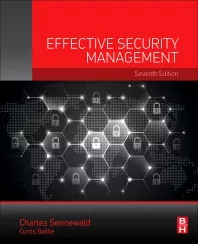Workplace Violence Prevention Revisited
In July 2010 I wrote about workplace violence within the healthcare industry in this column. The main focus was a document that was published by The Joint Commission titled, “Preventing violence in the health care setting.” I also discussed OSHA document 3148, “Guide for Preventing Workplace Violence for Healthcare Workers and Social Service Workers.” Both documents serve as a guide in the implementation of a workplace violence reduction program. In the column I stressed the need to install physical barriers in order to control access within specific areas of the facility. In addition, I emphasized the need to control visitors into the facility through the use of a visitor management system.
When it comes to workplace violence, the healthcare industry is not alone. OHSA has fined many organizations for violent incidents under its general duty clause and has been tracking violence within the workplace since the early 1990s.
According to the Bureau of Labor Statistics, from 2004 through 2008, an average of 564 work-related homicides occurred each year in the U.S. In 2008, 526 workplace homicides were documented, accounting for 10 percent of all fatal work injuries.
OHSA document 3148 identifies key components in the reduction of workplace violence within healthcare facilities and to healthcare workers. The main component of this document is a checklist of questions that help in the identification of processes that can successfully reduce workplace violence. These controls look to restrict access to people and places within the organization through physical barrier installation and policy implementation. According to OHSA, physical access restriction is the key component to the elimination of violence within the workplace.
Beyond healthcare, physical access restriction holds true for any industry wishing to reduce workplace violence. The use of physical barriers is fundamental in this process. This access restriction starts at the perimeter of the property line. When putting together a workplace violence reduction program, it is important to funnel persons into specific entry points and secure the remainder of the perimeter. Security provisions should physically restrict access onto the property. Consideration should be given to the installation of fencing, walls and other physical barriers that will restrict access.
At building exteriors, security systems should ensure that all exit and entry points are secure and have significant security in place to identify, detect and record any person who uses an access point in an unauthorized manner. Properly locking exit doors and installed alarm contacts and security video are keys in identifying the unauthorized use of fire exits and doors designated as closed to normal traffic.
So the purpose of this column is not only to highlight the continued escalation of workplace violence, but promote the importance of providing a consistent perimeter access security program that can reduce violence in the workplace. However, the installation of barriers is not enough: Many times after barriers are installed there is little or no monitoring and maintenance of these provisions. Often I personally see and hear horror stories of poorly managed perimeter security equipment and systems, including:
• Holes made in fencing or fencing compromised by fallen trees.
• Vegetation allowed to grow over and around fencing.
• Gates left hanging from their frames and gate locks are installed so that they can be opened by reaching around or through the fence.
• The planting of high, thick scrubs that mask access points and allow assailants to hide undetected.
• Lighting timers that are not updated to keep pace with seasonal changes or lighting that does not properly augment installed security video cameras.
The lack of repair and consistently inspecting exit and entry doors, fencing, lighting and exterior barricades undermines the fabric of any security program. The ability for an individual, stranger or ex-employee to identity and exploit these flaws in the security program may be the difference between a violent incident and the apprehension of an ex-employee/robber who should not be allowed in the facility.
When a commitment is made to identify and install systems to reduce the potential for violence, theft and trespass, processes must be put in place, along with the physical barricades and monitoring systems that will ensure the continued performance of these systems. Continued patrols, quick response to broken components and continued surveillance will guarantee the consistent level of security that is necessary to properly protect everyone that uses and resides within a facility.
Looking for a reprint of this article?
From high-res PDFs to custom plaques, order your copy today!



